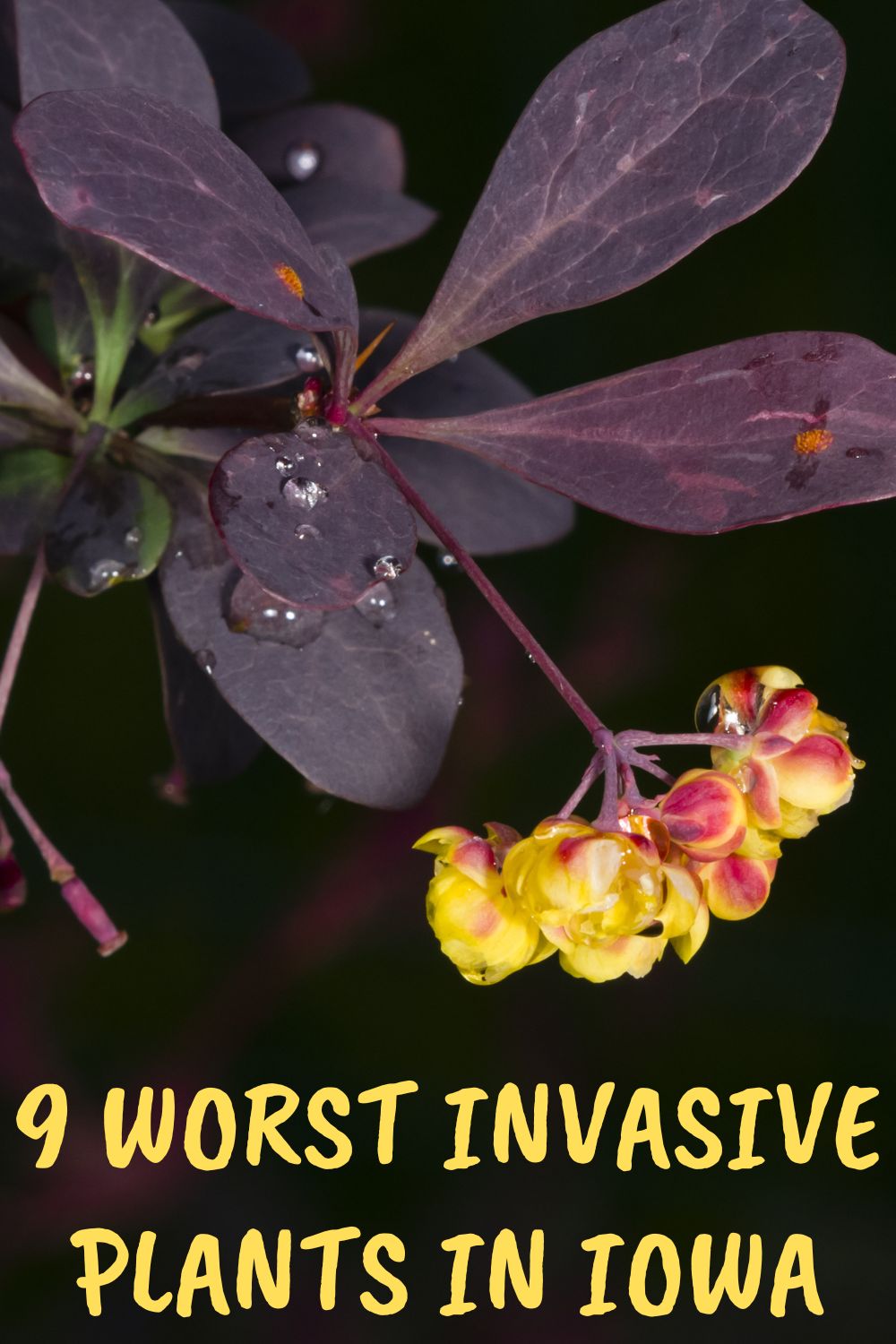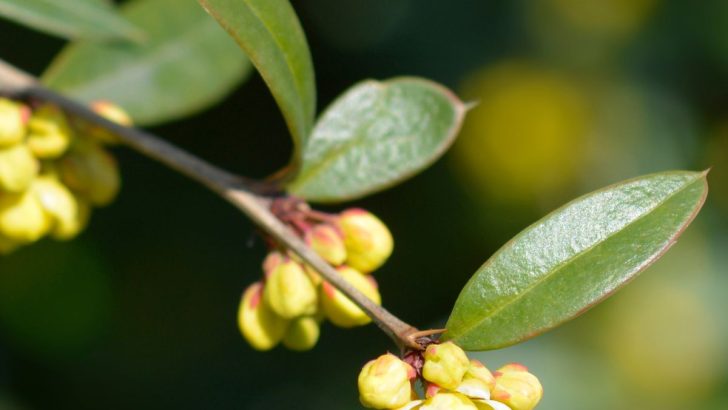Invasive plants pose a significant challenge to Iowa’s ecosystems. These noxious weeds threaten prairies, forests, and even aquatic environments, impacting the health of native plants and animals. While humans often introduce invasive species, whether accidentally or intentionally, changing climates sometimes allow plants to spread naturally from their native range to a location where they lack controls to their growth. However they arrive, invasive plants in Iowa — and elsewhere — spread aggressively and outcompete native plants, causing havoc throughout the ecosystem.
But when we know how to identify invasive plants, we can take steps to control them. In their place, we can restore native communities, nurturing flora and fauna endemic to Iowa.
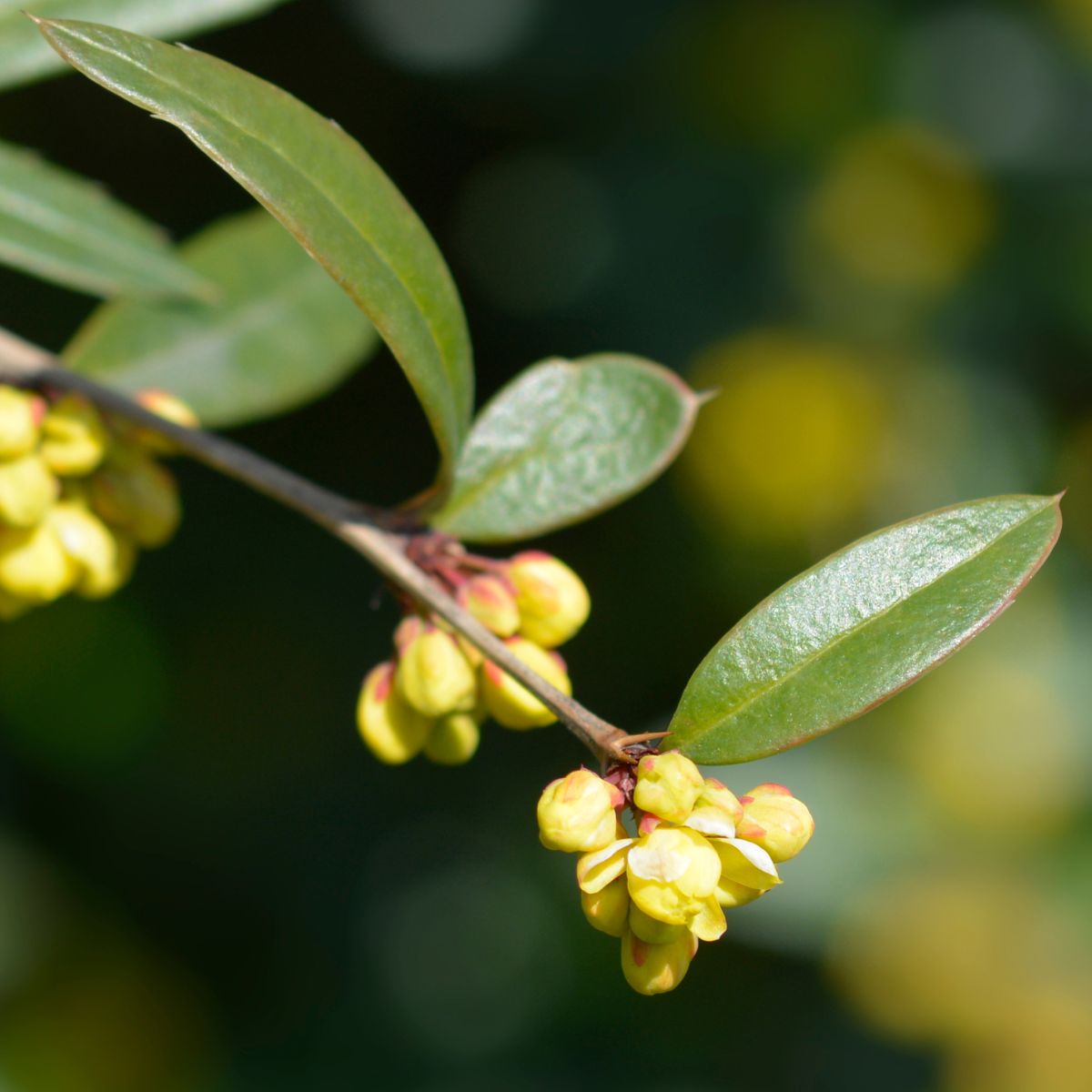
Worst Invasive Plants in Iowa
The Iowa Department of Natural Resources lists 38 invasive plants in the state. This feels like a daunting number to dive into, so I have compiled a list of nine of the worst invasive plants in Iowa to help you get started identifying and controlling invasives that may be present in your backyard. Each item in the list below includes identification tips, control measures, and similar native plants to grow instead.
1. Buckthorn (Rhamnus cathartica and R. frangula)
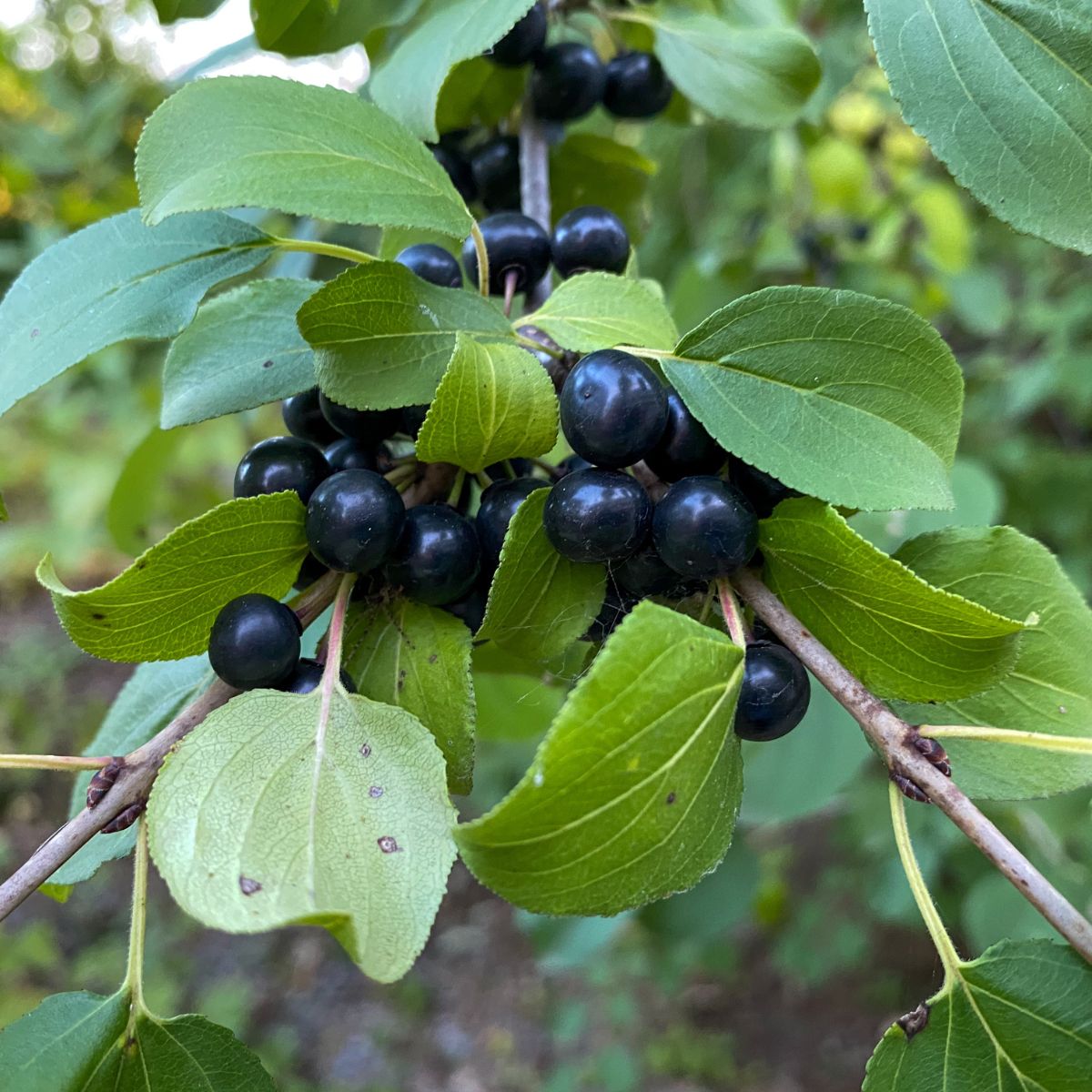
Common or European buckthorn and glossy buckthorn are shrubs or small trees originally introduced as hedges or landscape plants. The simple, round to oblong leaves have finely serrated (common) or smooth (glossy) edges and turn yellow in fall, remaining on the plant after most trees have dropped their leaves. Tiny white or greenish yellow flowers appear in late spring, followed by berrylike drupes that ripen from red to black.
Pull or dig seedlings, and use basal bark or cut stump herbicide treatment on larger plants.
Similar native shrubs include hazelnut (Corylus americana) and silver buffaloberry (Shepherdia argentea).
2. Burning bush (Euonymus alatus)
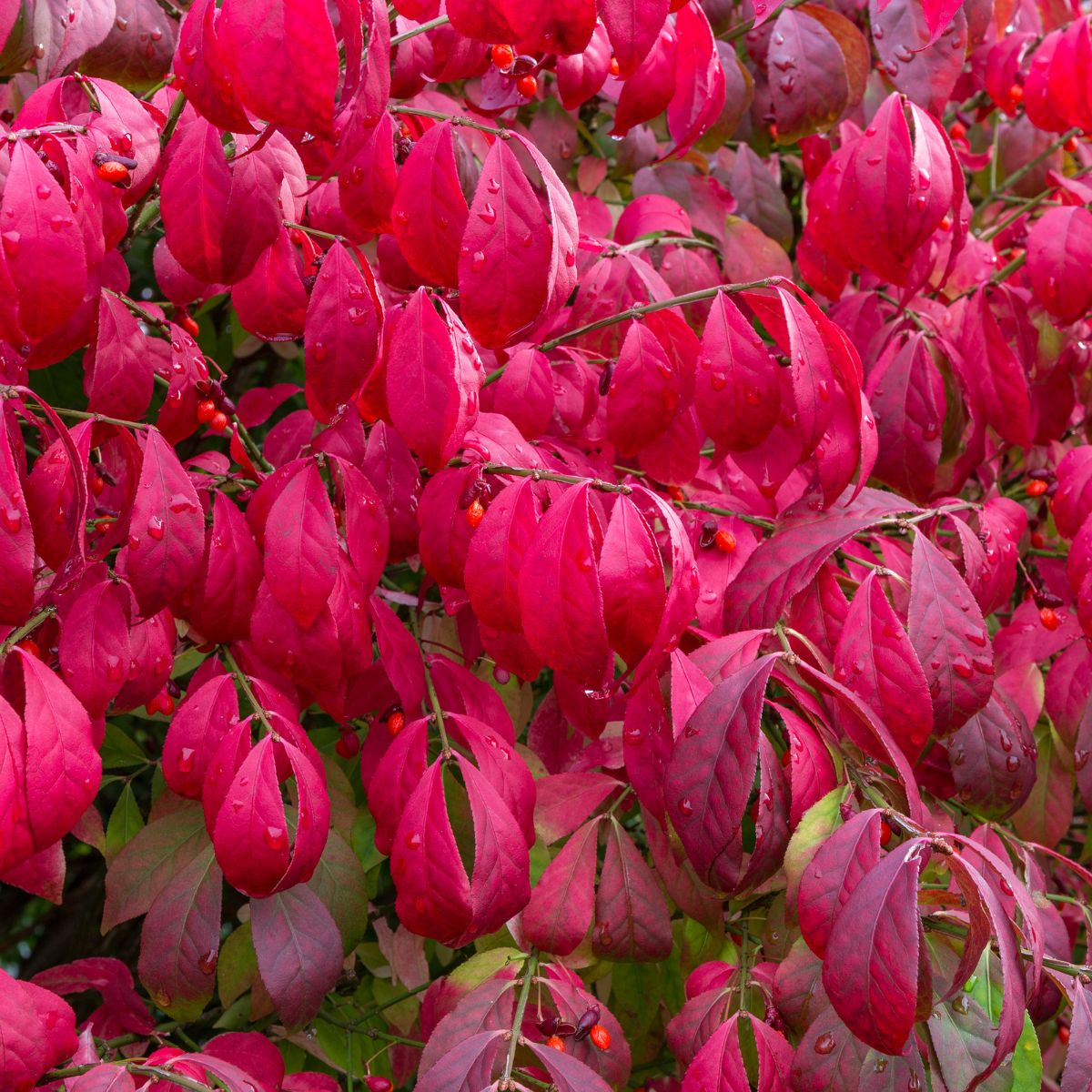
An exotic ornamental shrub, burning bush is popular for its vibrant red fall foliage. This large, dense shrub has one- to three-inch, elliptical, finely serrated leaves. It can be easily identified by the “wings” that grow along the sides of the stems. Clusters of three tiny, greenish flowers precede red fruit capsules that split to reveal the red seeds.
The most effective control method is to cut the bush and apply herbicide to the stump to prevent resprouting.
Plant native burning bush (E. atropurpureus), also called eastern wahoo, instead, or a similar native shrub-like fragrant sumac (Rhus aromatica).
3. Bush honeysuckle (Lonicera morrowii and L. maackii)
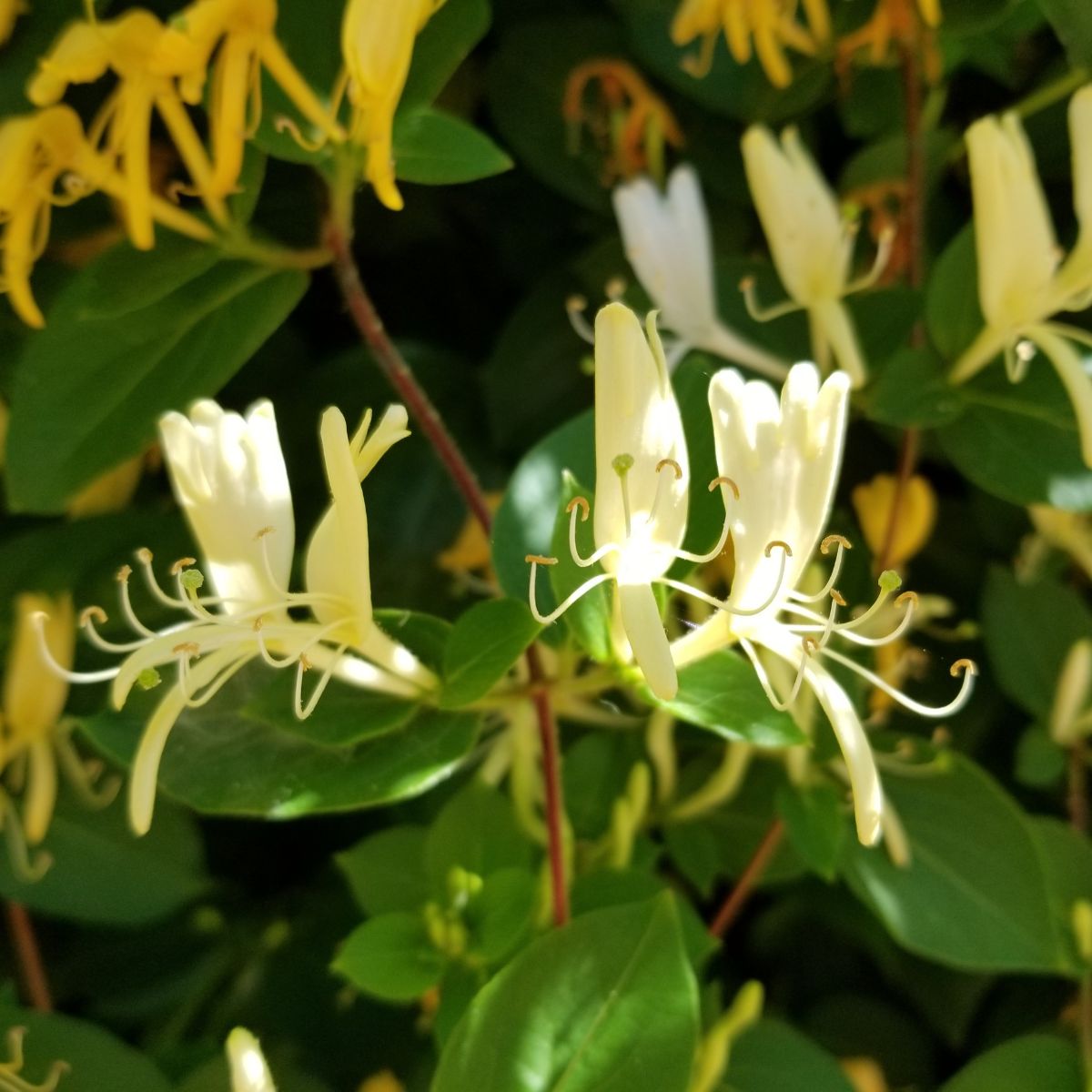
Morrow’s and Amur honeysuckle are two deciduous shrubs invasive in Iowa. Both produce the classic tubular, white to yellow flowers with a sweet fragrance. These plants form dense thickets of stems that become hollow with age and opposite, egg-shaped leaves. The berries ripen to orange or red.
Pull or dig small plants. Larger plants will need to be cut, with herbicide applied to the stumps, or use basal bark spray.
Honeysuckles native to Iowa include red honeysuckle (L. dioica) and grape honeysuckle (L. reticulata).
4. Garlic mustard
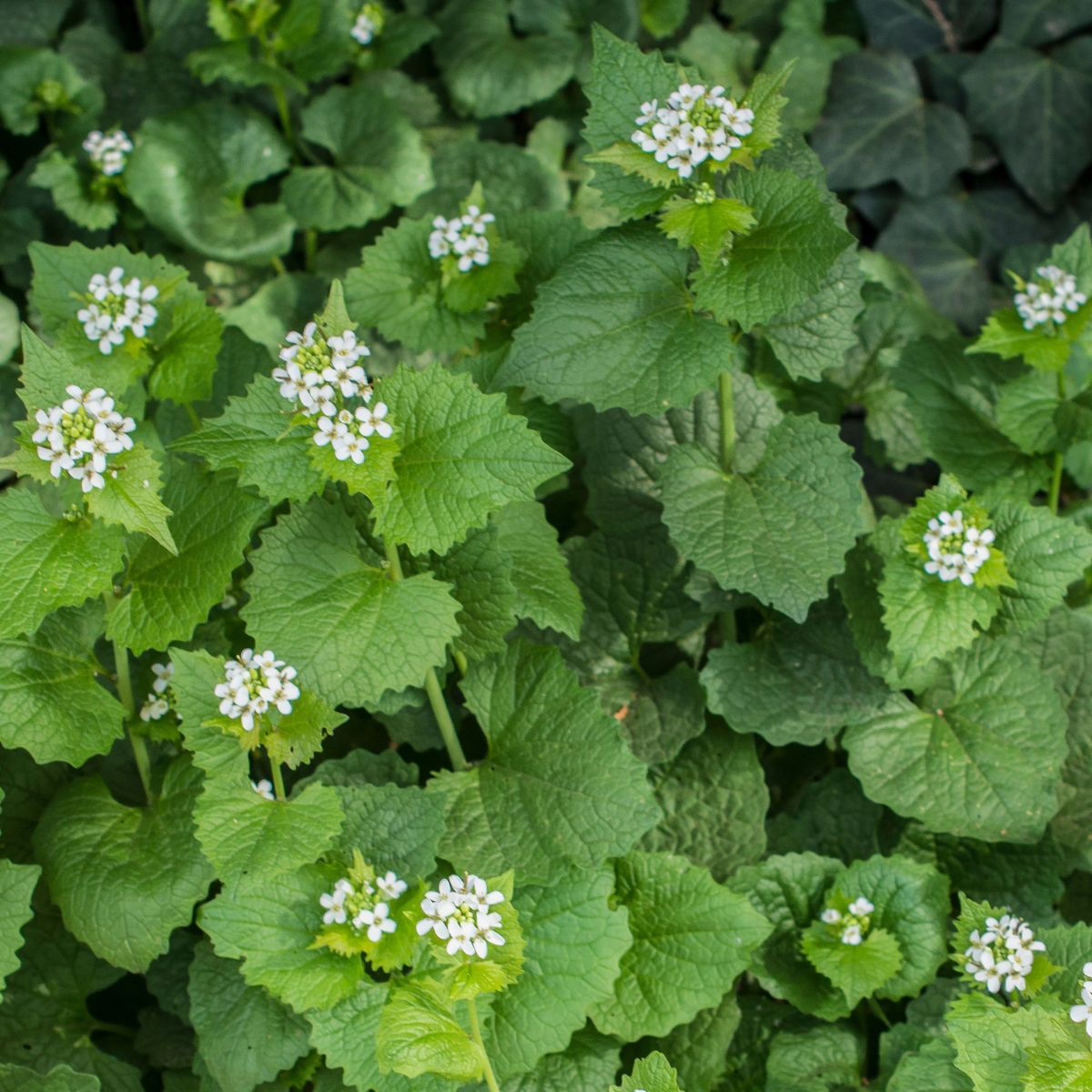
A biennial, garlic mustard appears as a low rosette of heart-shaped leaves with scalloped edges in its first year. In the second year, plants produce a flowering stalk up to three feet tall, with a cluster of tiny white flowers a the top. Thin, green, elongated seed pods follow, and the plants die midsummer. The plants smell like garlic when crushed.
Hand-pull and dispose of garlic mustard, ideally before it sets seed. Prescribed burning and foliar herbicides are also effective.
Native forbs with similar growth habits and white flowers include miterwort (Mitella diphylla) and Canada anemone (Anemone canadensis).
5. Japanese barberry (Berberis thunbergii)
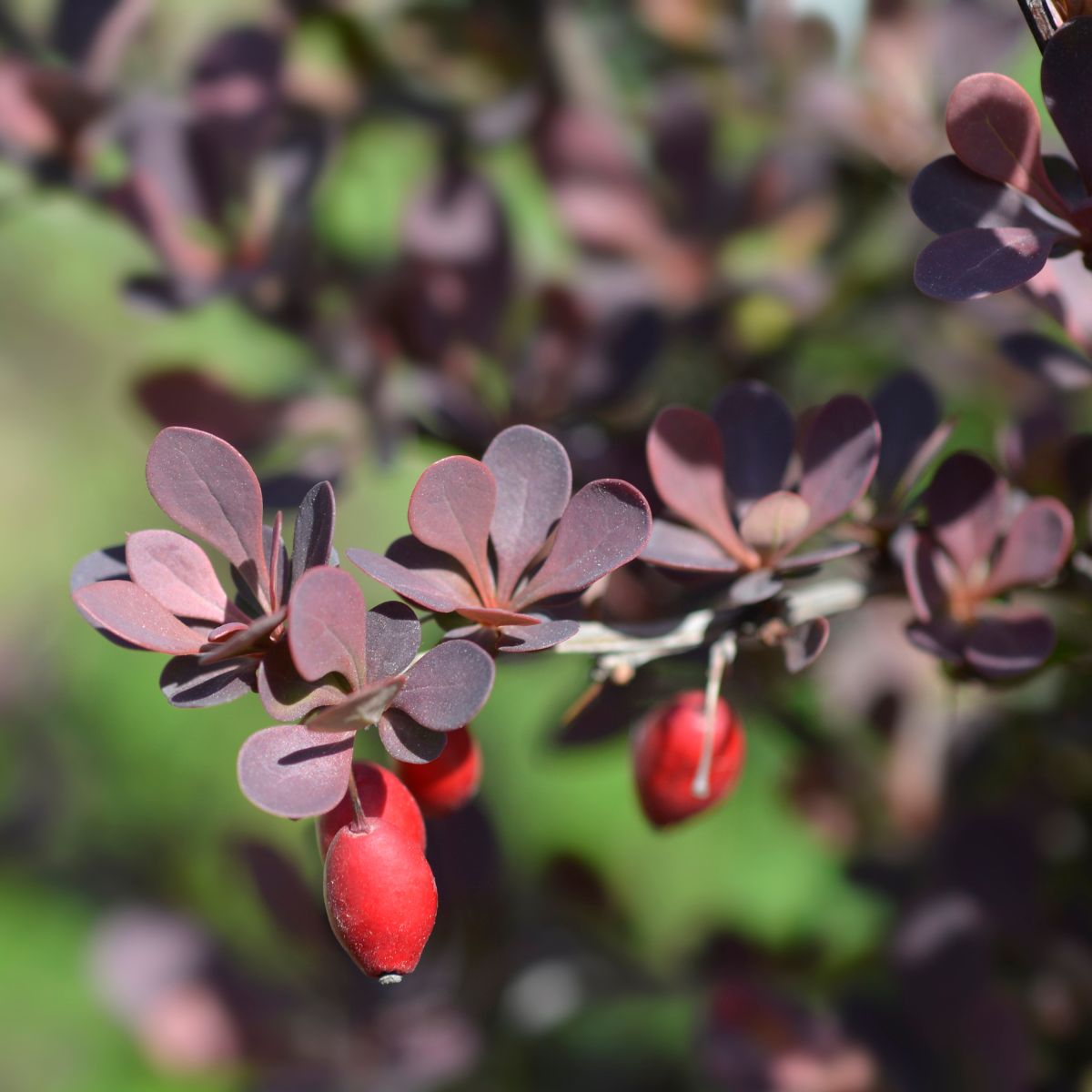
Japanese barberry is a low, dense shrub. A thorn grows at the base of each cluster of leaves, which are small, oval, and green or blue-green, turning reddish-purple in fall. Japanese barberry produces tiny yellow flowers and bright red, egg-shaped berries.
Prescribed burning, mowing, and cut stump herbicide treatment are all effective control methods.
Plant native shrubs instead, like common ninebark (Physocarpus opulifolius) or red chokeberry (Aronia arbutifolia).
6. Multiflora rose (Rosa multiflora)
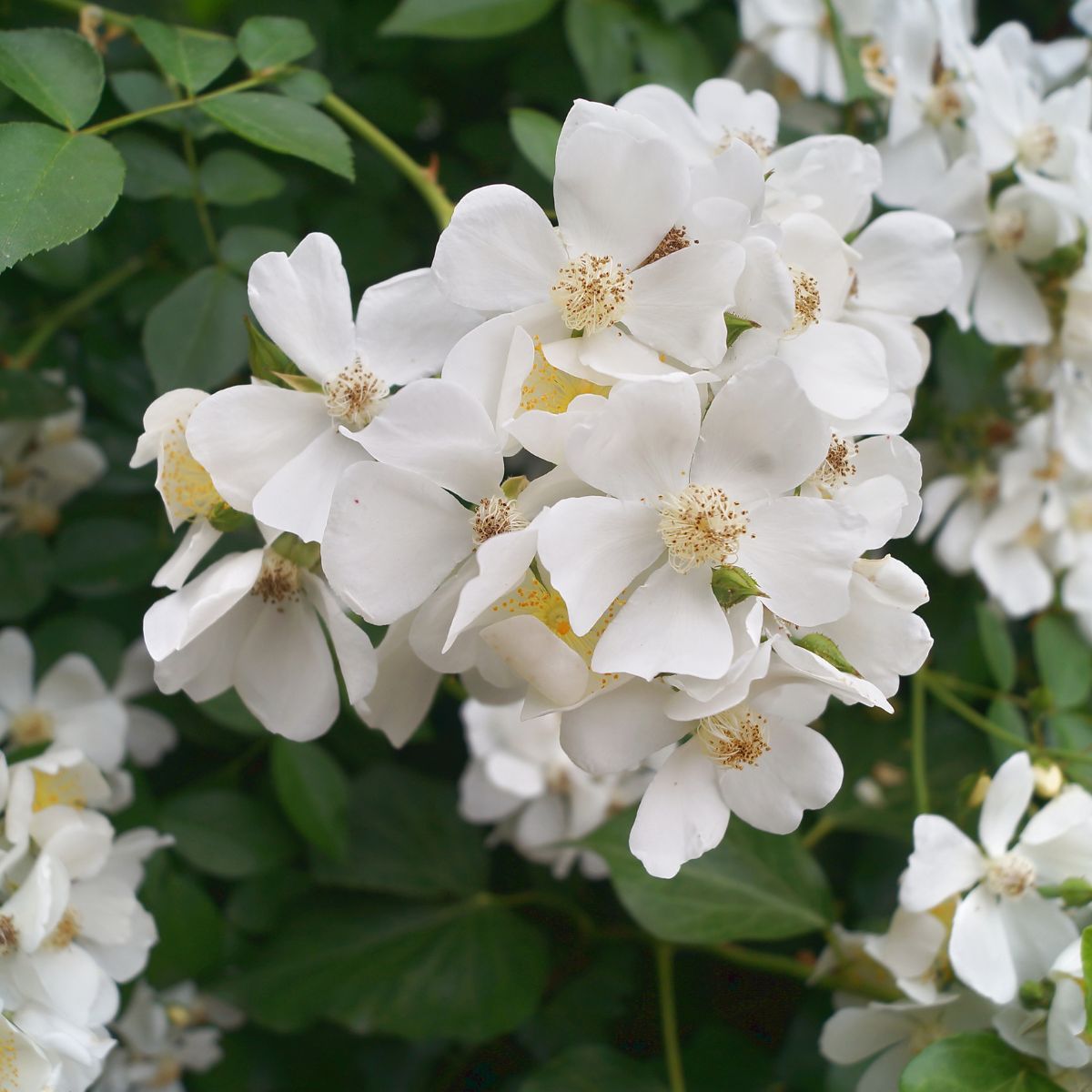
Up to 15 feet tall, multiflora rose blooms in late spring with small, white flowers. This dense shrub has arched, thorny stems covered in pinnately compound leaves with five to 11 toothed leaflets and distinctive fringed petioles. Bright red rosehips often stay on the plant through winter.
Hand-pull or use foliar or cut stump herbicide application to control.
Several roses are native to Iowa, including prairie wild rose (R. arkansana) and early wild rose (R. blanda).
7. Oriental bittersweet (Celastrus orbiculatus)
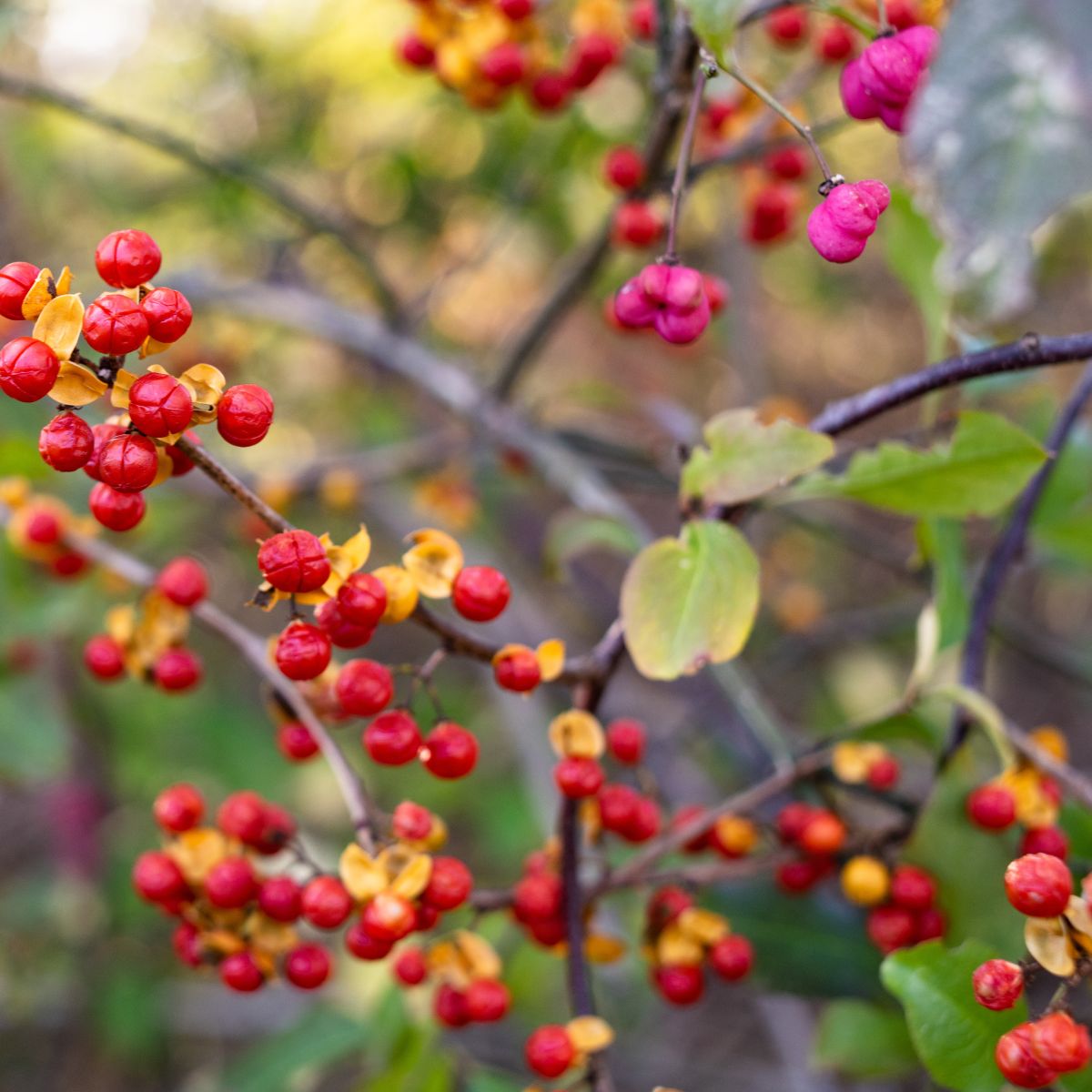
A climbing vine, oriental bittersweet has glossy, round leaves with finely serrated margins. It produces clusters of small, greenish flowers at leaf axils and is perhaps best identified by its green or yellow fruits that split open to show three fleshy, reddish arils containing seeds.
Oriental bittersweet can be managed by mowing and then spraying resprouts or using cut stump herbicide application.
Plant American bittersweet (Celastrus scandens) instead, or another native vine, such as common trumpet creeper (Campsis radicans).
8. Reed canary grass (Phalaris arundinacea)
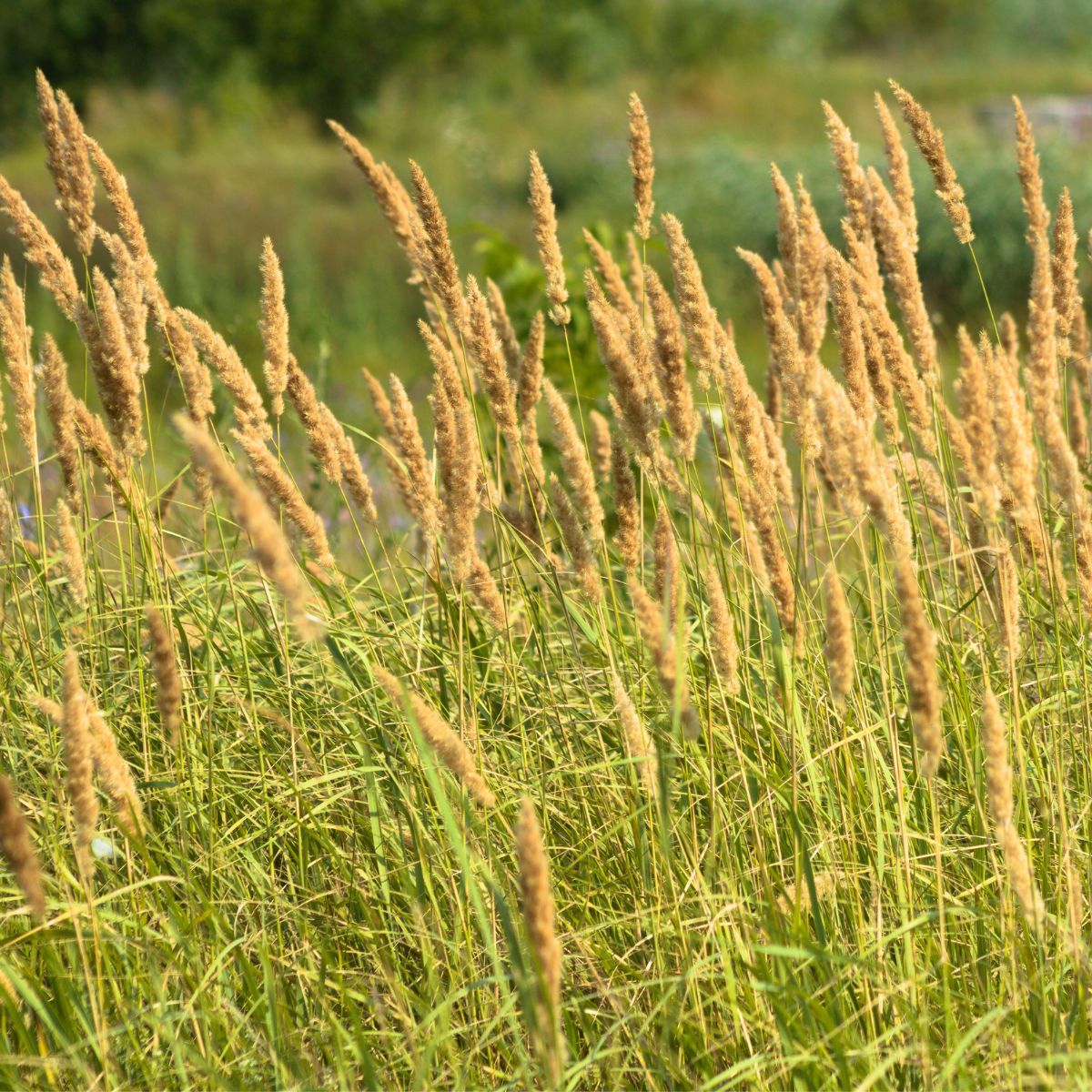
Reed canary grass averages two to six feet tall and has flat, gradually tapering leaf blades with a rough texture on top and bottom. Look for a stiff, half-inch ligule at the base of each leaf. Three- to six-inch branched flower clusters age from green or purple to beige.
Hand-pull young plants in the spring, before seeds form, or apply foliar spray. A combination of several control methods used several years in a row will be the most effective.
Attractive native grasses include little bluestem (Schizachyrium scoparium) and side-oats grama (Bouteloua curtipendula).
9. Tree of heaven (Ailanthus altissima)
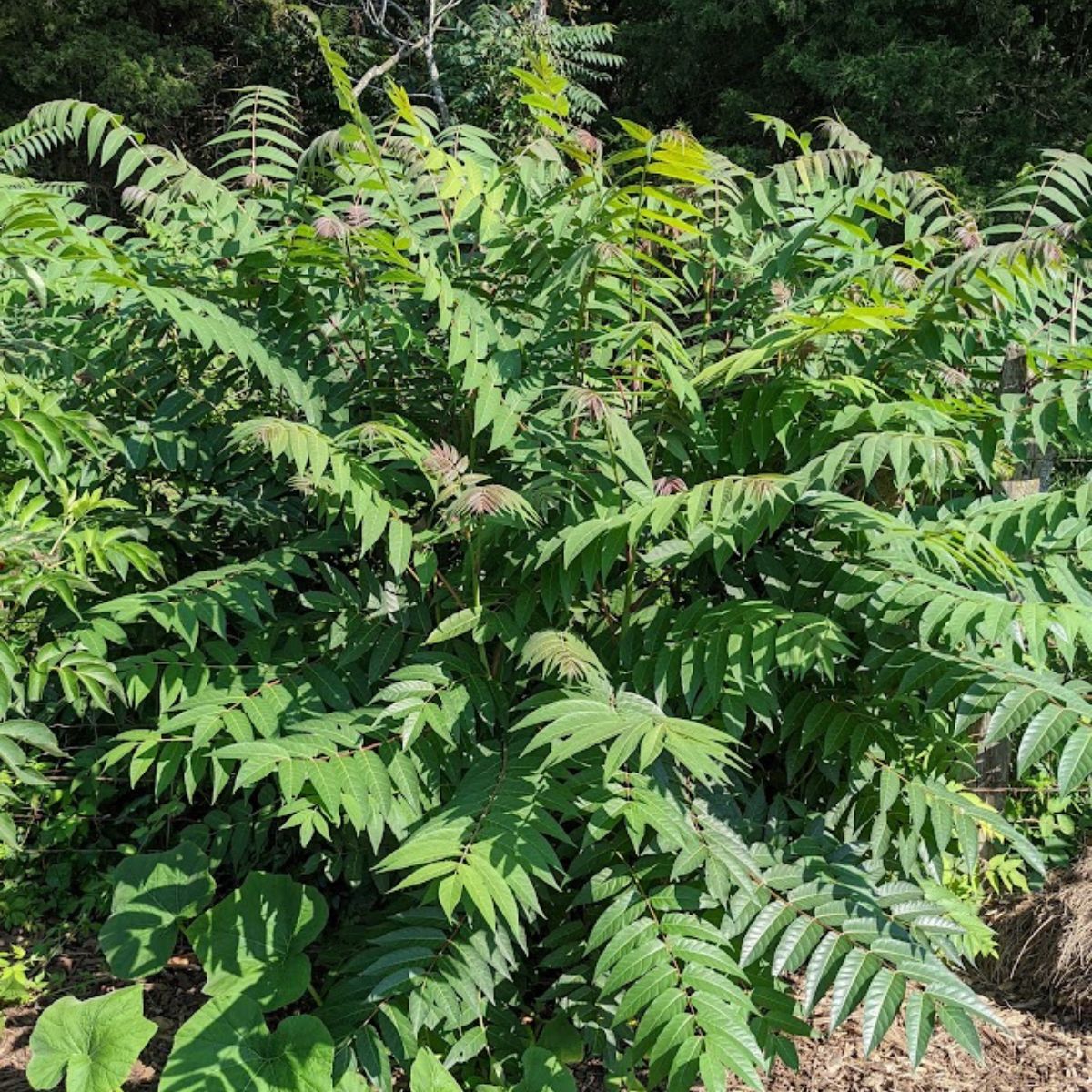
Tree of heaven is a deciduous tree up to 80 feet tall. Its large, pinnately compound leaves have up to 30 lance-shaped leaflets. The crushed leaves or scratched bark give off a distinct, pungent odor. In spring, clusters of small, yellow-green flowers bloom at the ends of branches. Pink to tan, winged, papery fruits follow.
Pull small seedlings, making sure to remove all root fragments, or cut and apply herbicide to the stump. Monitor the following year for any resprouts. Learn more about how to remove tree of heaven from your yard.
Native sumacs, such as smooth sumac (Rhus glabra) or staghorn sumac (R. typhina), look very similar.
Iowa invasive plants can be identified and controlled, and native ecosystems restored. Thank you for taking the first step by reading about some of the worst invasive plants in your state!
